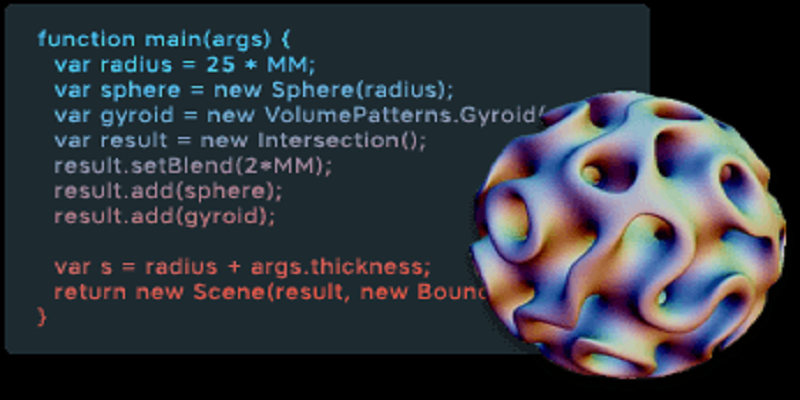
The new ShapeJS 2.0 has a “rich interface definition,” with scripts
“This release adds many new features to the language and environment. Most important is the use of GPU’s to enable faster evaluation of scripts. Typical scripts are 100X faster than ShapeJS 1.0, and can be rendered in real time. The new renderer is server-based to protect the author’s content from being borrowed and reduce the client side requirements.”
As stated above, the new version of ShapeJS is 100 times faster than the previous version, with the potential to be rendered in real time: now that is a major upgrade!
Let’s review some of ShapeJS 2.0’s other new features and improvements: real time evaluation using Open Computing Language (Open CL); image-based rendering; lower client compute requirements; protection of author’s 3D content; ability to share objects and parameters using zip format; 2D operations for image manipulation; revamped Integrated Drive Electronics (IDE); better argument passing and description; fast and accurate distance functions; improved Automatic User Interface Creation; blending of boolean operations for rounded edges; and user provided font support.
If you haven’t been exposed to ShapeJS yet, and this article has piqued your interest in all of the benefits of using it, Shapeways has made available educational tutorials and provided example content — including the video posted below. Shapeways has also announced that soon it will start providing blog posts for twelve straight weeks that cover a new object or ShapeJS technique — so stay tuned for more information and inspiration! You can also check out the ShapeJS website for more information, as well. Discuss in the 3D Design Made Easier by Shapeways Upgrade forum over at 3DPB.com.
